Bill and I had E.Walke and Steve over for a happy hour several evenings ago, and had a nice long talk about all the cool technologies they are incorporating, or plan to incorporate into their home. When E first told me about their technology-forward plans, I was honestly jealous. I wanted geothermal HVAC, and a powerwall charged by solar, and zero threshold entries, and in-floor radiant heat, and…
So this episode of the weekly blog that I write every couple of months will be about their house rather than themselves. Yes, I am an unapologetic nerd. I’ll write a more personal article about E&S probably sometime in October. Meanwhile, this post will be unlike others as I let out my inner engineer and talk about geothermal HVAC and rooftop solar.
The Project that Almost Wasn’t
S&E have been flitting in and out of the neighborhood for so long that it was a jolt when they reminded me it was touch-and-go whether they would move to the lot formerly known as André’s Place. Any number of problems could have stopped the project before it started. Would the house be subject to the ARB or the Water Conservation District? Stop! Does the lot have a lot of expansive clay soil whose shrinking and swelling would destroy their foundation? Stop! Will the neighbors dislike dogs? Full Stop!
Luckily, those problems are now simply counterfactuals. 316 Burns brushes against but is not actually in the ARB. Likewise for the WCD. The expansive clay stops a mere 46cm from grade, and Montana is more than welcome to the neighborhood.
So the project is a go, Steve and E.Walke have moved to temporary digs down the street while they destroy and rebuild, and we get a 21st century home in the neighborhood about which to brag.
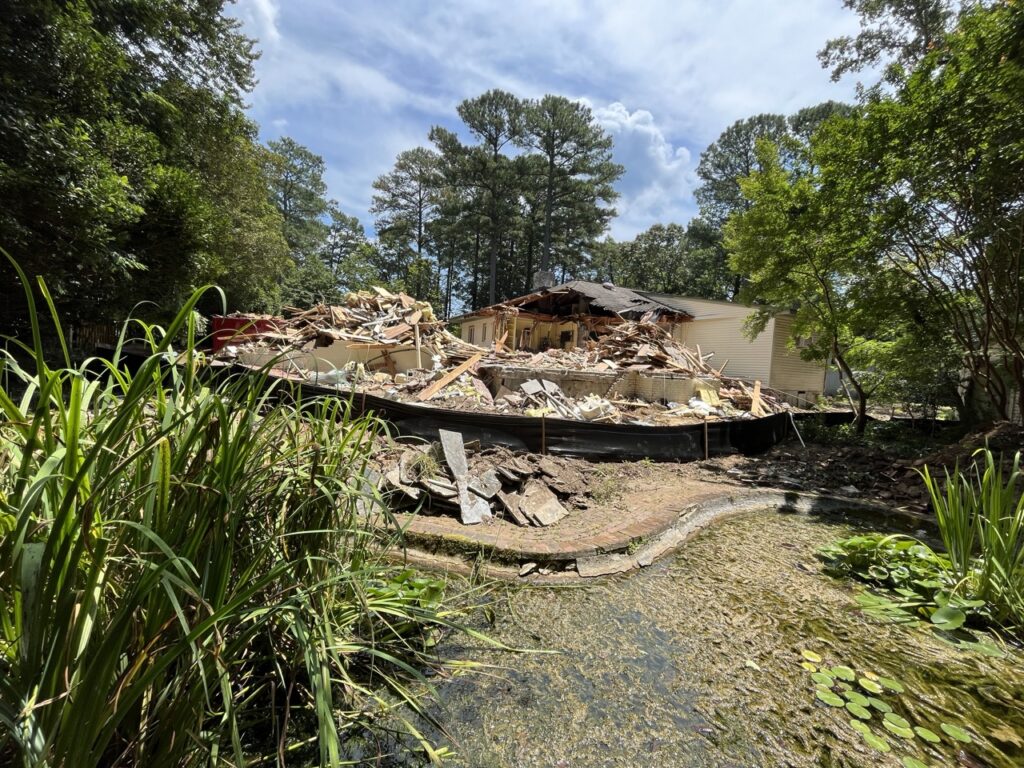
Now on to the two features I most envy, one that is in the works, the other maybe for the future.
Geothermal Huh?
I’m so envious that Steve and E.Walke are going to install a geothermal HVAC system with radiant floor heat and forced air heat/AC in their new home.
“So what,” You say? “316 Burns isn’t the first home in the neighborhood to use geothermal heating/cooling.” True, true. However they are probably the first to have a hybrid system with hot water pipes in the slab as well as forced air ducts in the ceiling. It’s an interesting design choice, giving them options for a quick injection of heat rather than always having to warm up the slab.
Look at our average highs and lows in Mar-May and again in Oct. If E&S use their radiant system in April, they would be comfortable at night, but during the day it would be too warm in the house. Radiant systems don’t react quickly to short-term temperature swings. With their hybrid system, E&S have the option to turn on forced air, giving the house a heat boost at night, then when the day warms up, they can turn off the system, open the windows and enjoy a nice spring day.
It looks like a brilliant design decision, and I look forward to hearing how it works after the system has been in operation for a year.
For those of you who aren’t familiar with geothermal heating and cooling, I’ll give you a quick overview. Apologies in advance to the engineers and physicists who know way more about the process than I. I’m going to skip over a lot of the details, so I ask forgiveness in advance.
The science starts with an 18th-19th century French dude named Joseph-Louis Gay-Lussac. He was a famous chemist who worked primarily with fluid and gas volumes. (An alternative is to work with weight, as did his arch-nemesis, the English physicist John Dalton.) Early in his career, JLGL came up with The Gay-Lussac law. This law can be described in a couple of ways, the most simple being
P/T = k
What does this deceptively simple formula mean?
For any closed system with a fixed volume containing a gas, where P is the pressure of the gas and T is the temperature of the gas, their ratio is a constant.
Gay-Lussac is asserting that P and T are directly proportional. That’s a bit of math jargon meaning if the pressure increases, so will the temperature. Likewise, if the pressure decreases, the temperature will go down.
HVAC systems can use these temperature and pressure shifts to heat and cool a closed circuit of refrigerant. Then, using heat exchangers, the refrigerant can transfer heat to cool air blown into your house, or heat water pumped through pipes. I’ve employed my obviously extraordinary artistic talent to create an admittedly simplified diagram illustrating the process. The two colored boxes represent the heat exchangers.
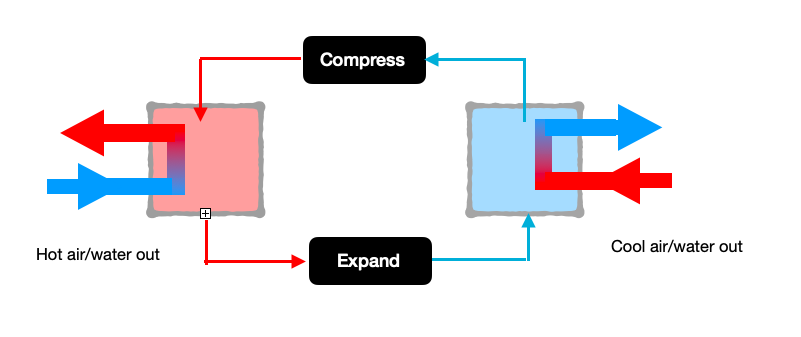
This is basically how your refrigerator works, or your forced-air heat pump sitting on the slab in your back yard, or your wall-mounted AC unit. It also explains why your SCUBA first stage regulator gets hot, hot, hot when you fill the tank, and why your bicycle valve gets chilly when you release the air out of your tires.
Depending on which valves you open or close, you can make cool air to blow into your forced air system, or you can make hot air to blow into your forced air system, or you can make hot water to pump into your radiant heating system. Theoretically you could make cold water as well. I’ve never heard of a domestic system needing that feature.
What makes the system geothermal?
The Earth’s temperature stays steady at about 50F just a few feet under grade. And the Earth is massive, acting as a thermal battery that never runs down. Take a look at the above diagram and imagine all the pipes moving the refrigerant between the heat exchangers are sitting below ground at a constant 50F.
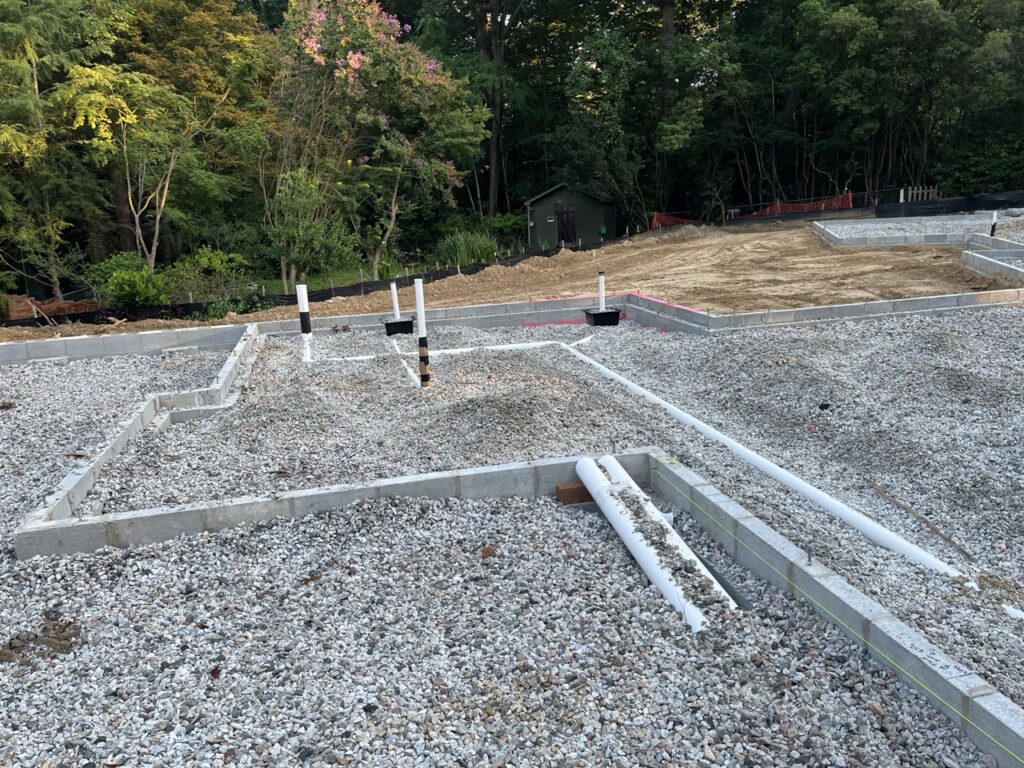
The system will radiate excess heat into the ground after compression, releasing the pressure and bringing the system back to a nicely cool 50F. At this point the system is ready to chill some air for the AC. That is why geothermal systems are so much less expensive to run than standard HVAC systems. The heavy lifting is done without using metered electricity.
Using the Earth’s steady-state to ‘reset’ the temperature of the refrigerant in the HVAC system is a very good thing, because the refrigeration cycle can fail when the environment in which the refrigerant sits is no longer within tolerance. Back when Bill and I had a boat, our HVAC system used river water to establish the steady-state temperature of the system’s refrigerant. This worked well for AC, not so much for heat. The system generally failed in January and February because the water at our marina was too cold. Once the water approached freezing there simply was not enough energy in in the refrigerant to pull out any heat. The Earth’s steady temperature means S&G won’t ever have that problem in their domestic HVAC.
To Solar or not to Solar?
This geothermal HVAC system is in the works, and should be in place when E.Walke and Steve move in. I also have a bit of system envy for their solar plans, which are currently on hold for at least a year.
Those of us who lived here a few years back may remember when W&M did a survey to determine whether it made sense to install solar panels in the neighborhood. (I haven’t been able to find a link to the study. If anyone knows were I can get a copy, please let me know in the comments.) Unfortunately, the answer was very nearly a universal, “No.” Not only do we have lots of high trees (those loblolly pines again), we have wonky property lines, so few of our homes face directly south. Plus, we just don’t get enough sun in the winter, so the solar panels would generate little to no electricity for three months of the year.
That’s why it surprised me quite a bit when E.Walke told me last year that they intended to generate their own electricity with a rooftop solar array, and store it using a Tesla powerwall. Apparently, they have a sweet spot in the neighborhood. By setting their home near the back of their lot, they get enough swinging room to make solar a viable option.
Despite this, they aren’t going to install solar. At least not right away. Why?
Because of Net Metering.
In some states, such as California, and apparently Minnesota, local power companies have been required to buy, as in pay cash for, solar power generated by its customers. Such a program fostered investment in solar power generation since homeowners could start getting a return on their investment immediately.
Unfortunately, these programs had problems.
In California, where there are many, many people and a whole lot of sunshine, the program nearly bankrupted the power companies. Said companies were required to buy the power from customers’ domestic solar arrays, so residents with rooftop solar weren’t incentivized to invest in batteries. Why bother storing excess power if you can sell it? Participants generated power during the day and pushed any excess to the power grid, for which they received payment. Then in the evening they bought power.
Do the math. At times of the year when people didn’t need to run AC, there was a lot of excess electricity being generated. So much so that the amount of power being pushed to the grid exceeded not only demand, but the ability of power companies to transmit the electricity at all. So the companies had to turn off the spigot, or sometimes even pay neighboring states to take the excess. But, even though they weren’t able to use, nor to store the electricity, they still had to buy it. Read about California’s woes here.
The rules changed before every power company in the state of California went bankrupt. Instead of buying excess power at retail prices, about $.30/kWh, California has decreased what they pay to new participants to around $.08/kWh. Since customers still have to buy electricity at retail, new solar users are incentivized to store any excess power in their own batteries, making new solar implementations up to $10K more expensive to install. Unless the cost of electricity in CA skyrockets, these homeowners may never see a positive ROI.
Other states, including VA, have a different program to capture excess solar, called Net Metering. Net Metering allows participants to offset the cost of any power they buy with surplus they generate at other times, reconciled annually. So in the spring and fall when there is still quite a bit of sunshine, and no need to run AC or heat, participants can rack up credits with Dominion. Then, in the winter, when sunshine is less plentiful, these participants can use their credits to buy power. Additionally, participants can roll credits over from one year to the next, so while you never actually have to donate excess power to Dominion, there are certainly no incentives to install more solar capacity than you need.
Getting back to E&S, they need to size their system only to generate in a year as much as they use in a year. Anything more would be a waste. So their plan to generate electricity is on hold until they have enough data to properly scale their investment. Which is a bit of a bummer because I really, really wanted to see if solar arrays and a powerwall with an inverter could fulfill their power requirements.
Other Plans
The couple has other plans, including optical illusions to camouflage oversized doors, landscaping to capture water in the soil before it goes into the storm drain, rain gardens to filter runoff, innovative garage doors, … Ask when next you see E.Walke and Steve walking Montana.
Meanwhile, if Bill and I ever need to replace our HVAC, I definitely want a geothermal system.
Hmmmm. Maybe a little sabotage is in order? It won’t be suspicious at all if our HVAC system suddenly goes on the fritz. (Cue villainous laughter.)
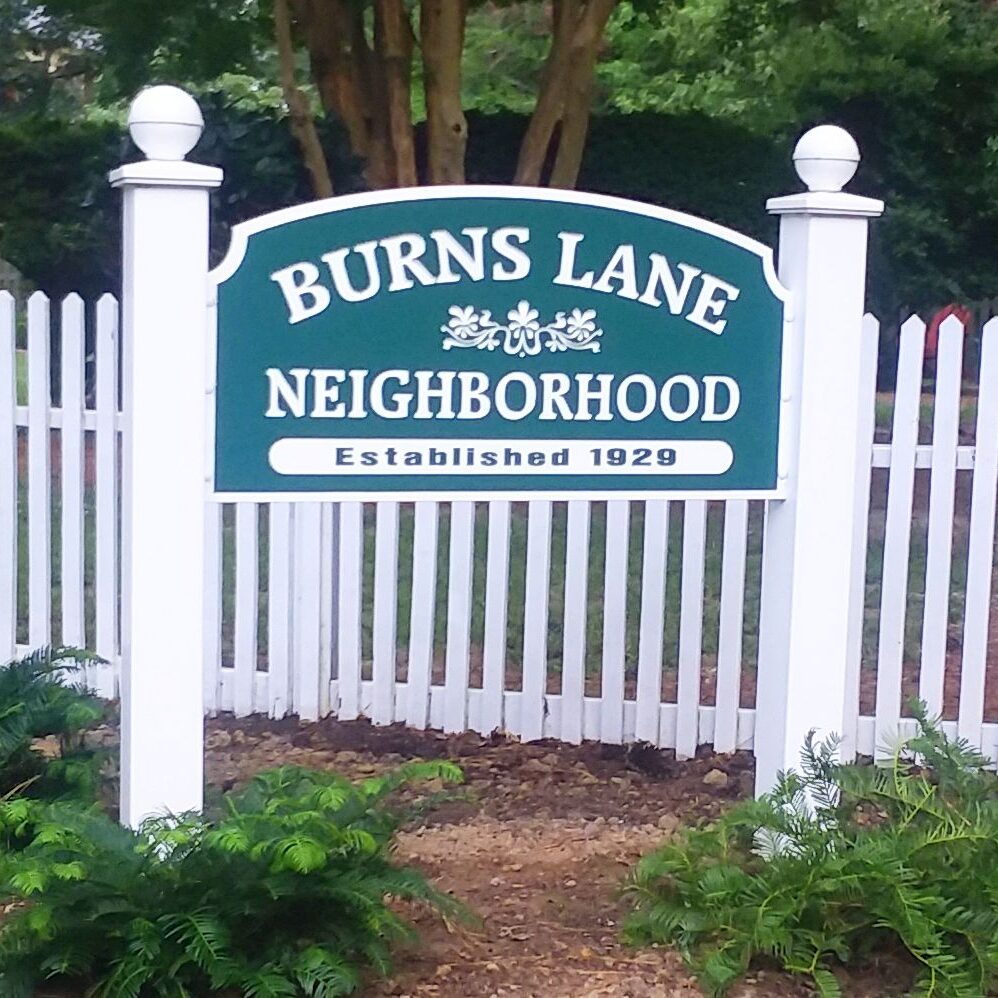
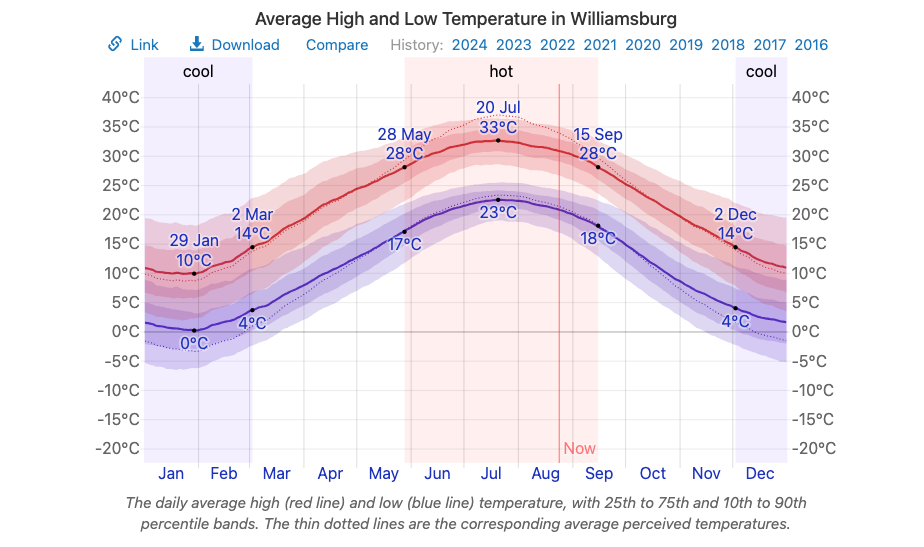

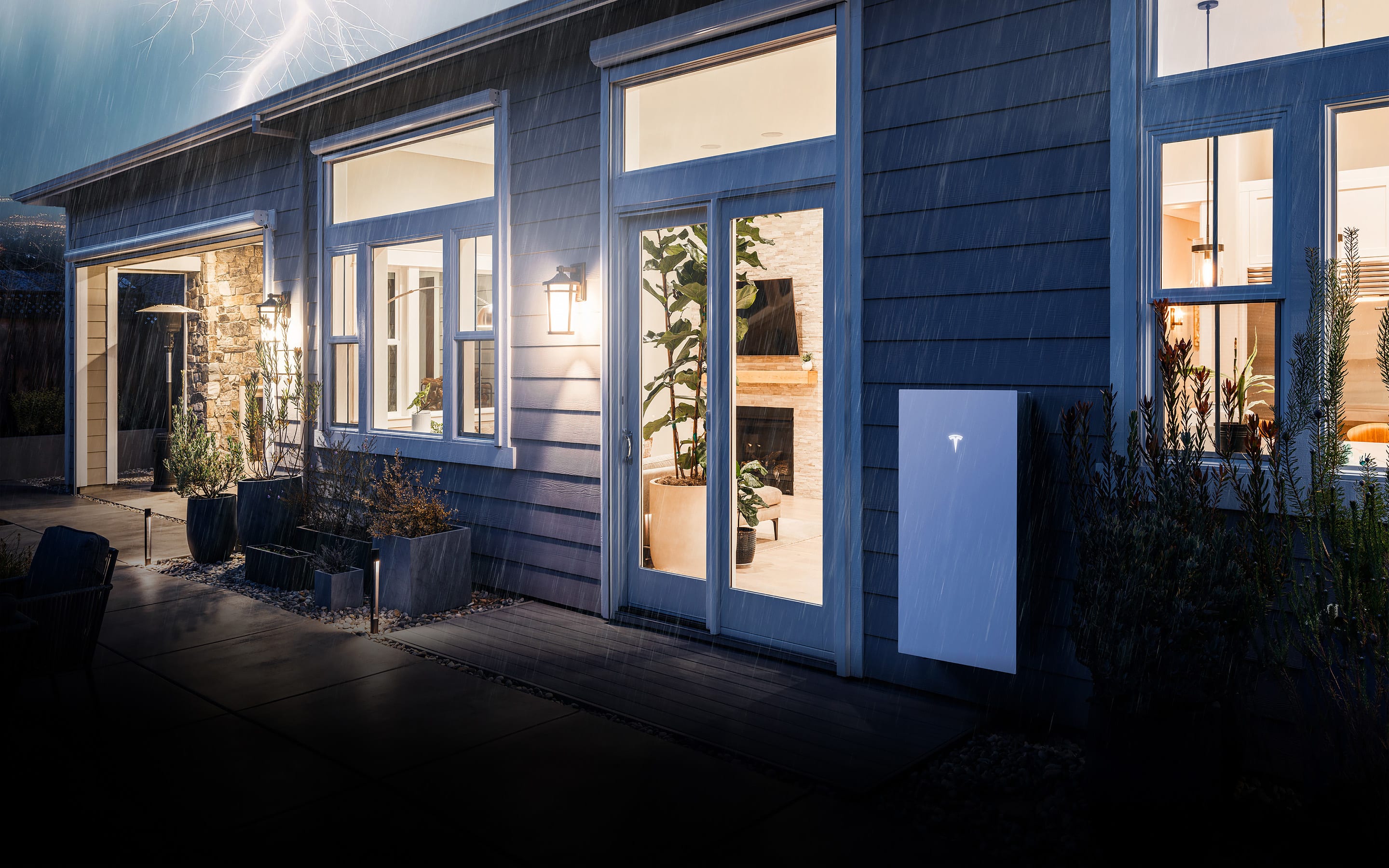
Flora Adams
blrawebmaster
Charlene Grabowski
blrawebmaster
Chris Gareis
blrawebmaster